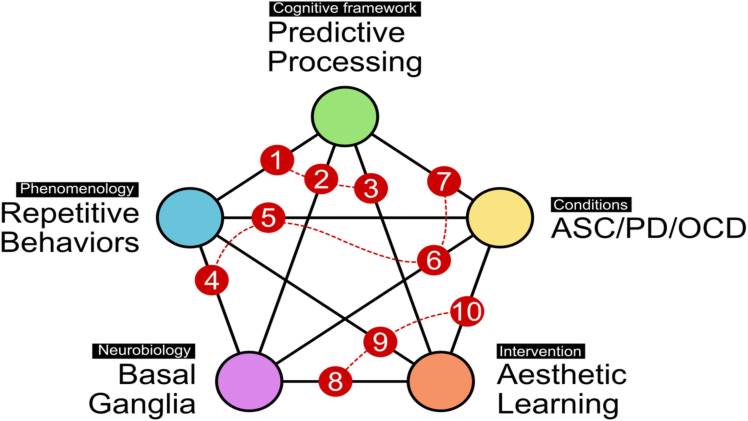The Psychology of Luck: Cognitive Biases and Beliefs in Online Color Prediction

Luck is a concept that permeates human cognition, influencing beliefs, behaviors, and decision-making processes. In the context of online color prediction, users’ perceptions of luck play a crucial role in shaping their attitudes towards risk-taking, prediction strategies, and outcomes. This article explores the psychology of luck in online color prediction, examining how cognitive biases and beliefs influence users’ behaviors and experiences in prediction activities.
Cognitive Biases and Heuristics:
Cognitive biases are systematic patterns of deviation from rationality in judgment and decision-making, leading to subjective judgments that deviate from objective reality. In online color prediction, users may exhibit various cognitive biases and heuristics that impact their prediction strategies and outcomes.
- Overconfidence Bias: Overconfidence bias occurs when individuals overestimate their abilities or the accuracy of their predictions, leading them to take excessive risks or ignore contradictory evidence. In online color prediction, users may exhibit overconfidence bias by believing that they can accurately predict color outcomes with a high degree of certainty, leading to suboptimal decision-making.
- Confirmation Bias: Confirmation bias involves seeking out information that confirms one’s existing beliefs or hypotheses while ignoring or discounting contradictory evidence. In prediction activities, users may selectively interpret color outcomes or statistical trends in a way that confirms their preconceived notions about luck or prediction strategies, leading to biased decision-making.
- Gambler’s Fallacy: Gambler’s fallacy is the mistaken belief that past events influence future outcomes in a random process, leading individuals to expect that deviations from the average will be corrected in the opposite direction. In online color prediction, users may fall prey to gambler’s fallacy by expecting that a streak of certain color outcomes will be followed by a streak of the opposite color, despite the outcomes being independent and random.
- Availability Heuristic: The availability heuristic involves making judgments based on the ease with which relevant information comes to mind, rather than its actual frequency or probability. In prediction activities, users may overestimate the likelihood of certain color outcomes based on their recent experiences or vivid memories of past successes or failures, leading to biased perceptions of probability.
- Anchoring Effect: The anchoring effect occurs when individuals rely too heavily on an initial piece of information (the “anchor”) when making subsequent judgments or decisions. In online color prediction, users may anchor their predictions or betting decisions to initial color outcomes or betting patterns, leading them to underestimate the influence of new information or changing probabilities.
Beliefs about Luck and Superstitions:
Beliefs about luck and superstitions play a significant role in shaping users’ attitudes and behaviors in online color prediction. Cultural and individual beliefs about luck influence users’ perceptions of probability, risk-taking, and decision-making, impacting their prediction strategies and outcomes.
- Luck as External Force: Some users view luck as an external force or cosmic phenomenon beyond individual control, attributing fortunate or unfortunate outcomes to fate, destiny, or divine intervention. In online color prediction, users may rely on lucky charms, rituals, or prayers to invoke good fortune and ward off bad luck.
- Luck as Internal Attribute: Others see luck as an internal attribute or personal quality that can be cultivated or influenced through positive thinking, optimism, and resilience. In prediction activities, users may adopt a “lucky mindset” by visualizing success, setting positive intentions, and maintaining confidence in their prediction abilities.
- Superstitious Behavior: Superstitions are irrational beliefs or practices that are often based on magical or supernatural thinking. In online color prediction, users may engage in superstitious behaviors, such as wearing lucky clothing, avoiding certain colors or numbers, or performing rituals before making predictions, in the belief that these actions will influence outcomes.
Implications for Prediction Behavior:
The psychology of luck has profound implications for users’ prediction behavior and experiences in online color prediction platforms like lottery7. By understanding the cognitive biases and beliefs that influence users’ attitudes and behaviors, platform operators can design interventions and strategies to promote more rational decision-making and enhance user satisfaction and engagement.
- Cognitive Bias Awareness: Educating users about cognitive biases and heuristics can help them recognize and mitigate the influence of biased thinking in prediction activities. Providing information and resources on cognitive biases and decision-making can empower users to make more rational and informed prediction choices.
- Promoting Responsible Gambling: Encouraging responsible gambling practices is essential to minimize the negative consequences of excessive risk-taking and gambling-related harm. Platform operators can implement features such as self-exclusion tools, deposit limits, and responsible gambling resources to support users in making informed and responsible prediction decisions.
- Cultivating Positive Beliefs: Fostering positive beliefs about luck and prediction can enhance users’ motivation, confidence, and engagement in prediction activities. Platform operators can create a supportive and optimistic prediction environment that emphasizes the role of skill, strategy, and perseverance in achieving success, while also acknowledging the inherent uncertainty of prediction outcomes.
Conclusion:
The psychology of luck in online color prediction is a complex interplay of cognitive biases, beliefs, and behaviors that influence users’ attitudes towards risk-taking, decision-making, and outcomes. By understanding the cognitive mechanisms underlying users’ prediction behavior and beliefs about luck, platform operators can design interventions and strategies to promote more rational decision-making, mitigate the influence of biased thinking, and enhance user satisfaction and engagement in prediction activities. Embracing a nuanced understanding of the psychology of luck enriches the prediction experience, fosters responsible gambling practices, and promotes a more enjoyable and fulfilling online color prediction environment.




